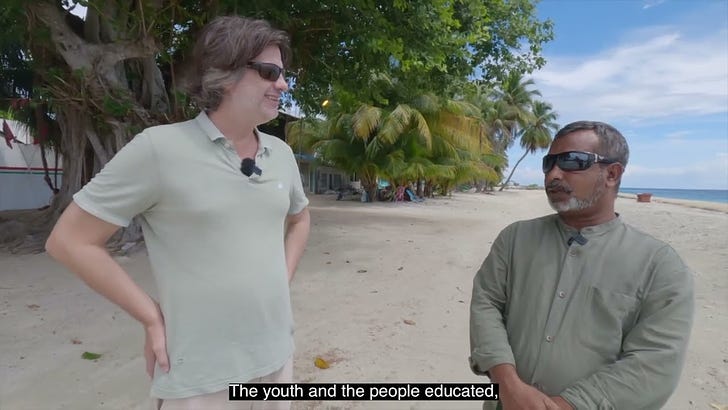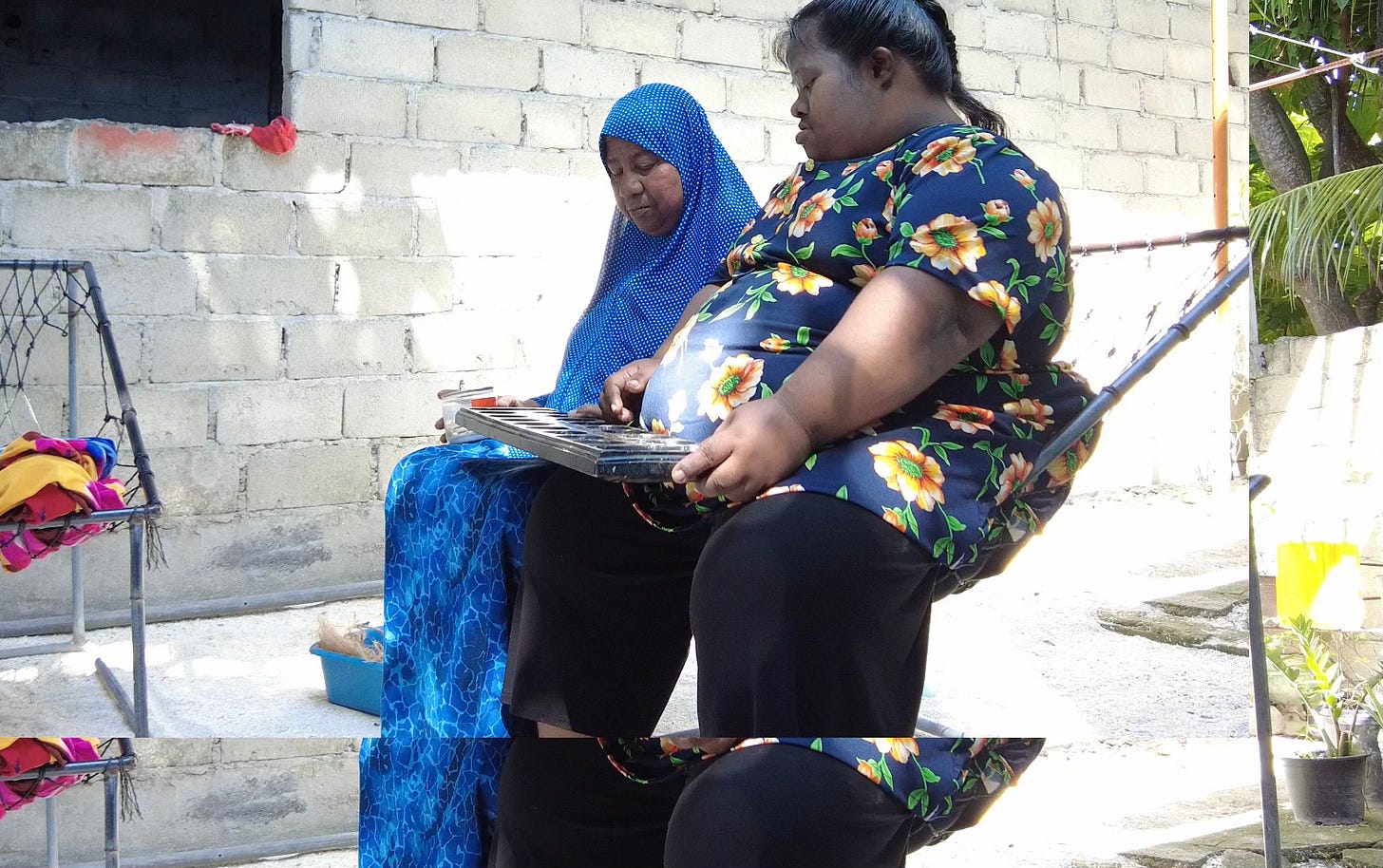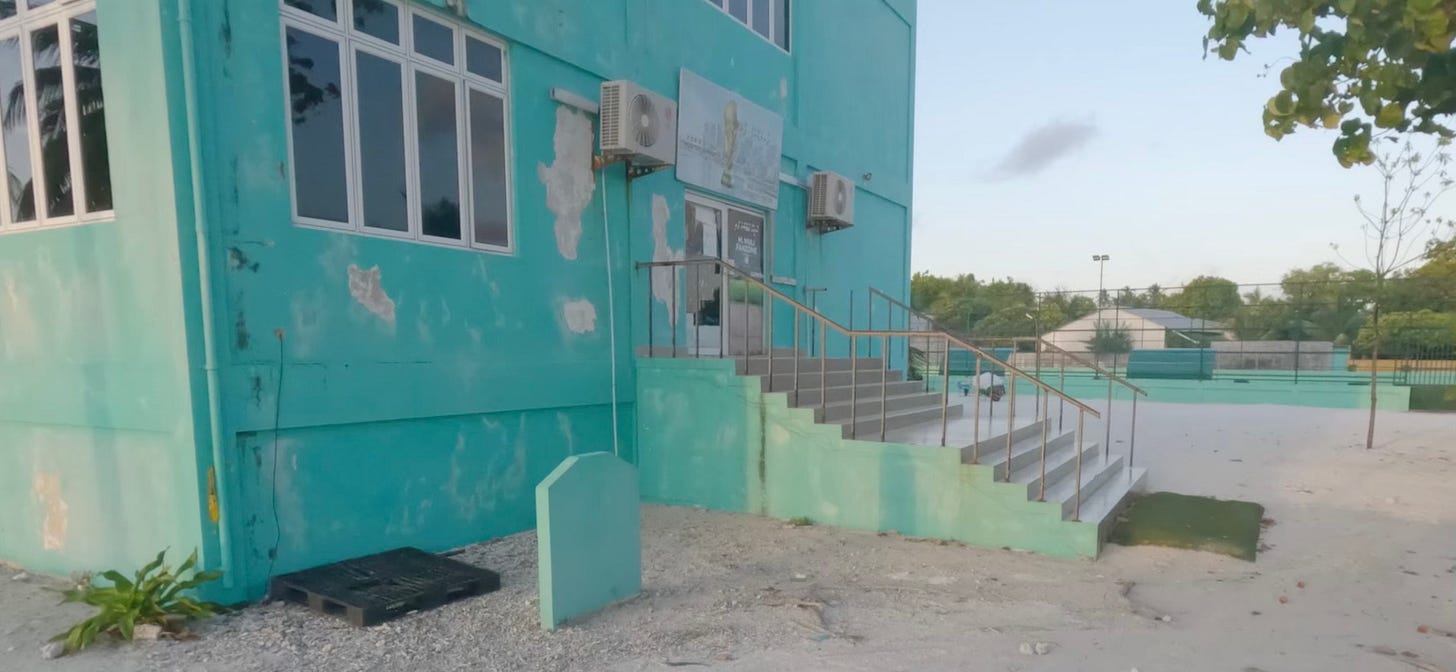When you read about how global warming is affecting the Maldives, the world’s most low-lying country, you feel a sense of urgency. Reports suggest that as early as 2050, many of its atolls could be submerged as the sea-level rises. That got me thinking about how populations will be relocated and if accessibility will be considered.
In the final installment of this behind the scenes series of my film Invisible Impact; Disability on Climate Change’s Frontline, I set sail for the Meemu Atoll.
A version of this video with audio description can be found here.
The entire behind-the-scenes series can be found on the Lens15 Media Youtube channel and at Lens15.com/impact.
When I said that I was headed to the Maldives, everyone assumed that I’d be staying in one of those cabins that rest over the ocean. That was not in the budget. Instead, I based myself on Hulhumale, an artificial island that some articles indicate was created in part to move populations onto as other islands go underwater. Before I arrived for the final leg of my Fulbright project, I expected to see national panic given all the climate change models as well as after watching videos of Maldivian leaders pleading for action before their country vanishes. That’s not what I found.
Life goes on in the Maldives as it does in many other parts of the world where severe storms, floods and other disasters increasingly threaten everyone’s safety. So, when I started asking around about plans to evacuate or relocate people with a disability from vulnerable islands, it wasn’t so surprising that I received mostly blank looks. While disability inclusion in emergency protocol is on the books, advocates, researchers and officials told me that implementing these measures is still a long way off.
The notion of disability rights is still in its infancy here. One organization that has pushed for greater inclusion and accessibility is the Maldives Association of Persons with Disabilities. The group’s founder, Ahmed Mohamed, was kind enough to take me to where he grew up on an island in the Meemu Atoll to meet with disabled residents and their families to get their thoughts on the ways climate change affects them. They’re much more worried about a tsunami, like the one in 2004 that spread across the Indian Ocean, washing over these islands. Mini tidal waves, or sea swells, are more likely and could lead to turning communities into climate refugees, local media report. What was clear though is that no one had ever recieved any official guidance on how to keep disabled loved ones safe during a disaster of any kind. And at least on the island Muli, places that were recently built to protect residents apparently didn’t take accessibility into consideration.
Another advocate who I turned to for insight was Aishath Nazhath. Among her many hats, she is the President of the Maldives Paralympic Committee. She sees that awareness of disability concerns is headed in the right direction, but creating accessible infrastructure across all the islands that can be useful in just daily life, let alone during an emergency, is a work in progress.
Jason: It doesn't seem to me that a lot of non disabled people recognize the barriers, the lack of accessibility that many disabled people face.
Aishath Nazhath: Yes. I agree with you. Like me being physically disabled, a person in a wheelchair. And I think for me, the challenges are huge. And especially living in a country like this. Slowly things are changing. But still most of the time, for me, going around and moving around independently or with someone, it's very difficult. The policies are there. But I have a feeling that still the regulatory bodies have to do more.
Jason: What happens to someone with a mobility disability, someone who uses a wheelchair, during a flood?
Aishath Nazhath: First of all I’d just be wondering is there anyone to help me? If not, am I able to wheel in the flood? So, if I'm in in a very remote island, I would say. If there is a boat there, even for me to go on the boat, if there, and usually there are in some islands kind of like steps, and they're very difficult to go on the jetty as well. So I don't know how many islands have a ramp. I haven't seen any. So, if there isn't a ramp for me, it will be very challenging. People have to carry me up.
Jason: What happens if public infrastructure, especially used for emergency situations- shelters or other centers. What does that mean to someone with a disability if basic accessibility is not built into those facilities?
Aishath Nazhath: We are the people who are at risk most. And I just wonder how many lives can be saved if we are in a position like that. When we talk about accessibility, we have to train people for those things. But it has been happening after the tsunami as well. They are providing training, but still, we need to do more.
Jason: In what ways could universal design accessibility be... A part of climate change adaptation?
Aishath Nazhath: When we look to climate change adaptation, universal accessibility, awareness should be created. There are a lot of ways that we can keep ourselves safe.
Jason: What are some good procedures, good practices for ways of training for accessibility?
Aishath Nazhath: Especially in the islands, when there is a sea swell, a high tide and if it gets flooded, they should involve the community in the training, how they should react in that situation. It will be a more resilient community.
Jason: I spoke with some people on these islands. Families with a disabled family member. They said that they have no idea. They've never been given any directive from the local island council. They've never heard any sort of best practices of what to do during an emergency. If that is the case, what's causing this gap?
Aishath Nazhath: There should be better coordination between, maybe here it's disaster management and the council. In terms of disability and climate change and these disasters. When they make all these policies, they should involve people with disabilities and hear their voices and do more research on this area.
This interview was shortened and edited for clarity.
Invisible Impact
Disability on Climate Change’s Frontline
An audio described version of the trailer below can be found here.
To find out more about my forthcoming short film, reach out to me at jason@lens15.com or reply to this newsletter.
Learn more at Lens15.com/impact
Keeley Giblin edited this newsletter





